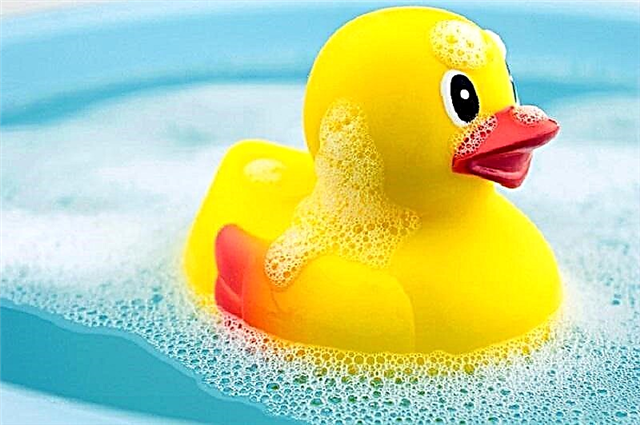An electroencephalogram or EEG of the child's brain is performed to assess the functioning of the nervous system. The device measures all brain impulses, which allows you to study the work of one of the main organs. The study has been known since the early 19th century. Over the years, scientists have been able to modify and improve the technology. At the moment, the procedure helps to identify complex neurological pathologies.

Child with a cap during examination
Indications for
Baby eeg is prescribed for a child according to certain indications. The procedure is recommended as an additional study. For babies and babies, eeg is prescribed last. An electroencephalogram is performed when:
- convulsions;
- neuroses;
- hysterics;
- increased tearfulness;
- unreasonable irascibility;
- circulatory disorders of the brain;
- head injuries and bruises;
- concussion;
- brain tumors;
- epilepsy;
- frequent fainting;
- persistent headache;
- autism;
- disorientation.
The procedure will help determine changes in nerve impulses and prescribe competent treatment for the baby. The study is carried out according to the indications for children of any age. The younger the child, the easier it is to conduct the eeg.
Important! During the study, it is necessary that the child is at rest.
What is the eeg for?
An electroencephalogram is prescribed in the presence of any abnormalities in the work of the brain. Allocate certain goals for the procedure:
- Evaluation of the severity and depth of impaired brain performance.
- Identification of the location of the affected area.
- Confirmation of the diagnosis.
- Checking the effectiveness of treatment.
- Study of the activity of the nervous system.
- Prevention of convulsive and epileptic syndromes.
The device is also used to determine the brain activity of patients who are in a coma or under prolonged anesthesia.
Preparing the child for the procedure
“How exactly is eeg done to a child?” - this question interests all parents. They are worried that the procedure is painless. There is nothing to worry about. In a neurologist's office, a child's sensor is connected to the head. Outwardly, it looks like a cap, electrodes extend from it, which read information into a special computer.
The area of attachment of the electrodes is lubricated with ultrasound gel or alcohol to exclude the ingress of air. The process lasts 7-9 minutes, it may take some time to calm the baby. It is necessary to prepare the child in advance:
- In the evening, they wash the baby and his head with shampoo.
- Before starting the study, the baby is fed.
- If the baby is used to a nipple or bottle, they must be taken with them.
- Older kids take their favorite toy with them.
It is necessary that the child during the encephalogram was calm and not cry. Infants can be put to sleep during the procedure. Parents must mentally prepare the child, convince him that nothing terrible will happen. Children under 3 years of age, after connecting the electrodes, remain in the arms of mom or dad.

Baby with dad
Advantages and disadvantages of the research method
What is the eeg of the head in a child? Not all parents understand the importance of encephalography. This study helps clarify many diagnoses. The method has its advantages:
- accuracy;
- quickness of determination;
- the possibility of examination during sleep;
- painlessness;
- convenient use of the device.
Of the shortcomings, they note the need to be immobile for some time, which not all children can do.
Decoding of EEG monitoring
What does the encephalogram of the child's brain show, and how quickly do they get the decryption? Such questions are often faced by doctors who perform the procedure.
Electroencephalography shows magnetic impulses during brain activity. This is done using an apparatus that reads strong and weak biocurrents. The result is displayed on the screen. The specialist compares it with the norm, which allows you to determine the deviations.
Only a doctor can make a decryption. As a result, only stripes are visible, which must be counted according to a certain principle. The conclusion is written on the same day, in extreme cases - on the next day.
Important! An encephalogram of the child's head helps to identify hidden neurological abnormalities.
How often should you repeat
An encephalogram for a child is performed as needed. The examination method is safe, it does not cause any harm to the baby. The brain cells are not affected during the procedure. Sometimes, in order to trace certain phenomena, doctors need to see the dynamics of the EEG. This method will allow you to detect changes in nerve impulses at different times of the day and with different activities of the crumbs.
For prevention, children with neurological damage in the past are prescribed a procedure once a year. If positive dynamics is observed for several years in a row, then there is no need to repeat the encephalogram.

Cap with electrodes
Is the procedure harmful
EEG does not apply to research that harms the child's body. The electrodes only read the nerve impulses of the brain. The indicator for reading is a special gel for ultrasound. It not only helps create adhesion to the cap, but also conducts electronic impulses.
The device does not generate any harmful substances or waves. The examination is safe, so the child does not need any protection. For some patients, the procedure may be prescribed with a difference of a couple of days. Such measures are taken to determine the effectiveness of treatment, which is prescribed immediately after the first eeg.
When an encephalogram helps make a diagnosis
The baby's eeg is prescribed as an additional study. If a controversial issue arises, or the diagnosis is in doubt, an encephalogram helps to draw a conclusion. The procedure helps with:
- night insomnia in a child;
- the baby's unwillingness to communicate with other children;
- delayed speech development (spr);
- increased attention to cleanliness;
- sleepwalking;
- fainting;
- frequent headaches.
If the child does not sleep well at home, is restless, naughty, but there is no diagnosis, then the eeg will help to put it. This method is carried out as an additional study to issue an opinion.
Frequent violations and possible diagnoses
A bad or inaccurate encephalogram in a child indicates abnormalities. Not all diseases can be cured, some of them remain for life. The device helps to determine the following disorders and diagnoses:
- autism;
- nervous tic;
- the cause of enuresis;
- tumors and formations of the brain;
- meningitis;
- encephalitis;
- epilepsy;
- convulsions;
- head vascular disease.
The EEG may not be the only method to rely on when making a diagnosis. To indicate a specific disease, you need a comprehensive examination.
Important! If you get a bad eeg result, it is recommended to repeat it after 10 days to double-check the correctness.
An electroencephalogram can show many diseases of the nervous system. The study analyzes the work of nerve impulses in the brain in a calm state. The method has been used in medicine for about 100 years. Children under one year old cannot speak out loud about their complaints, then doctors resort to a similar form of diagnosis.



